Abstract
Miconazole, a broad-spectrum antimycotic agent with some antibacterial activity, has recently become available for experimental parenteral use in the United States. Its efficacy as an anticandidal drug was tested in adult Wistar rats. A previously established infectious dose of 5 × 106Candida albicans was intravenously injected into 250- to 300-g animals. This dose was fatal to 95% (20/21) of placebo-treated control animals within the 2-week postinfection observation period. Only 4% (2/53) of rats receiving intramuscular miconazole treatment died. Miconazole therapy in Candida-infected rats at a dosage of 50 mg/kg per day resulted in 85% survival, and, although 100 mg/kg per day was 100% efficacious, it was a relatively large volume to give intramuscularly to a rat. Therefore, 75 mg/kg per day was used as a therapeutic dose, and it gave favorable results in this study. Histological examination of all placebo-treated animals revealed C. albicans and a marked inflammatory response in the kidney, brain, and heart. C. albicans organisms were observed to be very prominent in these tissues by using the Gomori methenamine silver stain, and were cultured from these organs. Miconazole-treated rats that were killed after surviving the 2-week observation period had minimal histopathological changes, and the organisms present did not exhibit the same staining characteristics, nor were they isolated like those in the placebo-treated group. Miconazole appears to be an efficacious drug for parenteral therapy, as demonstrated in this reproducible model of disseminated candidiasis in laboratory rats, and more extensive experimental studies are indicated.
Full text
PDF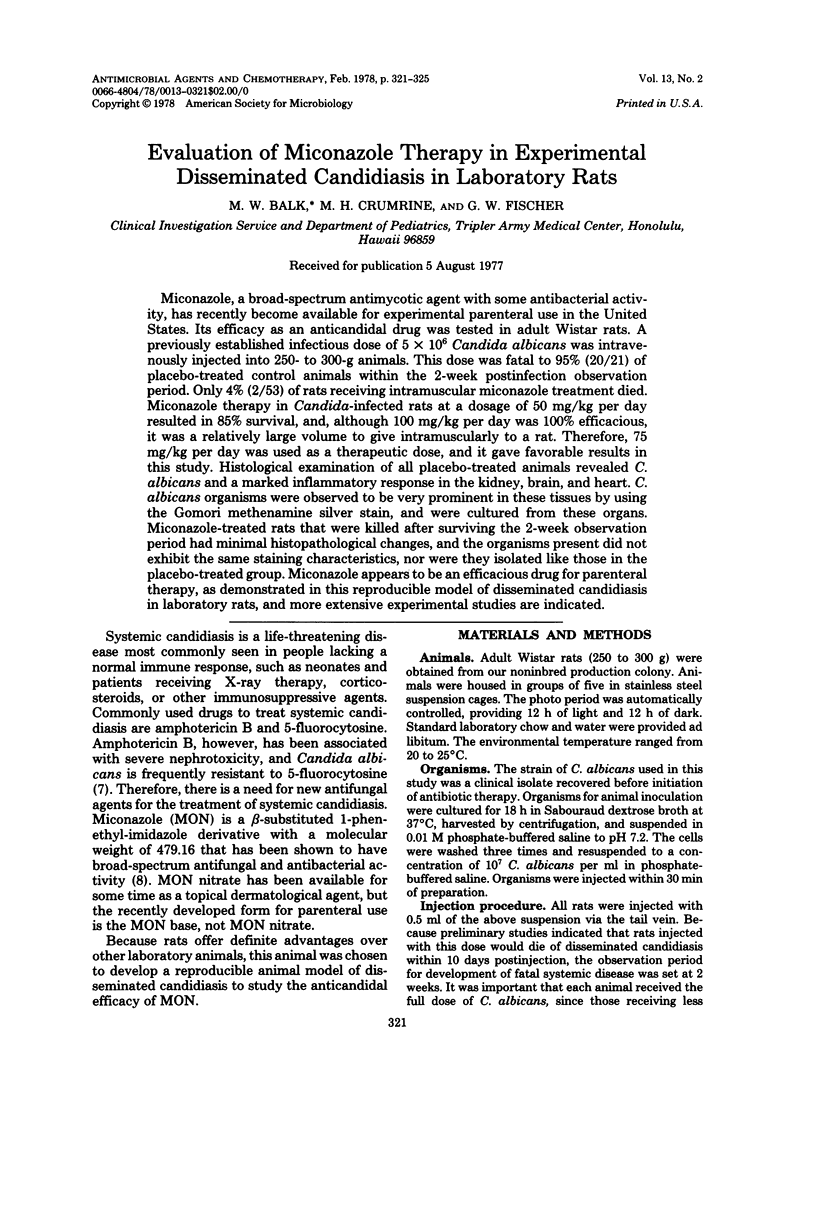
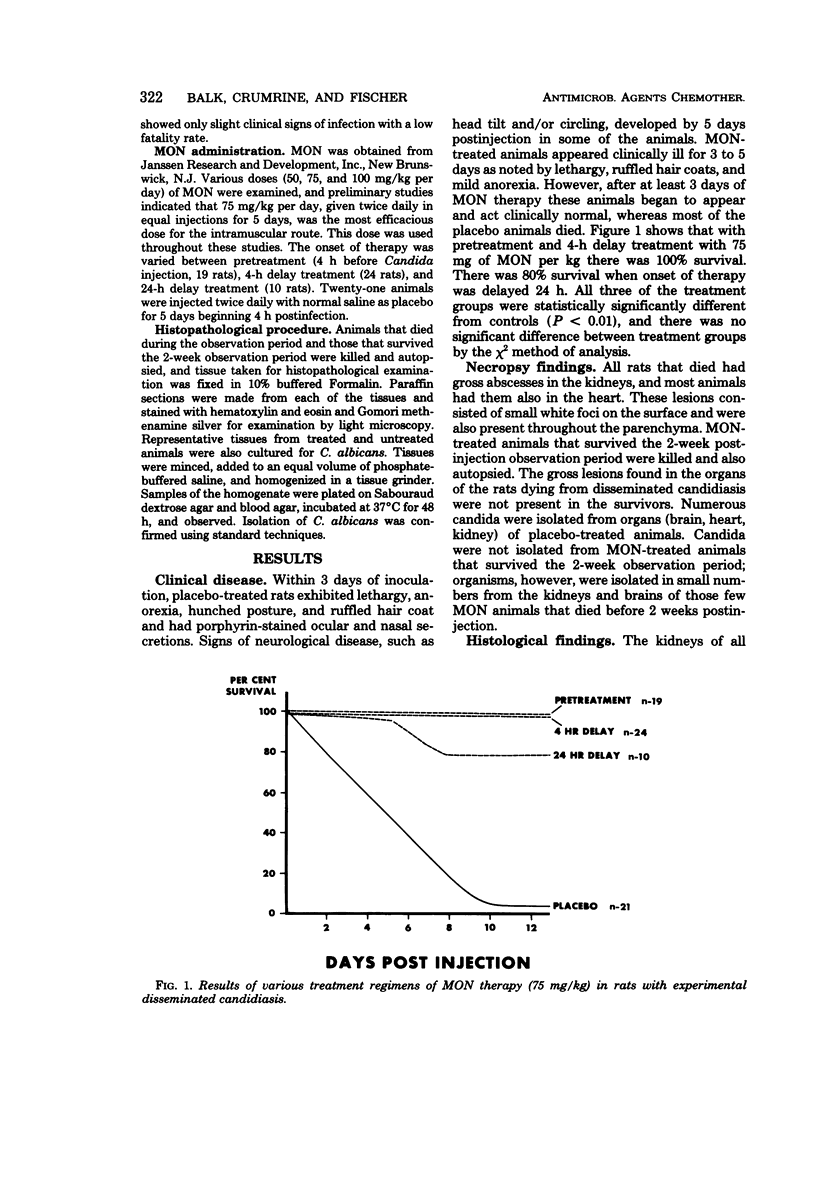
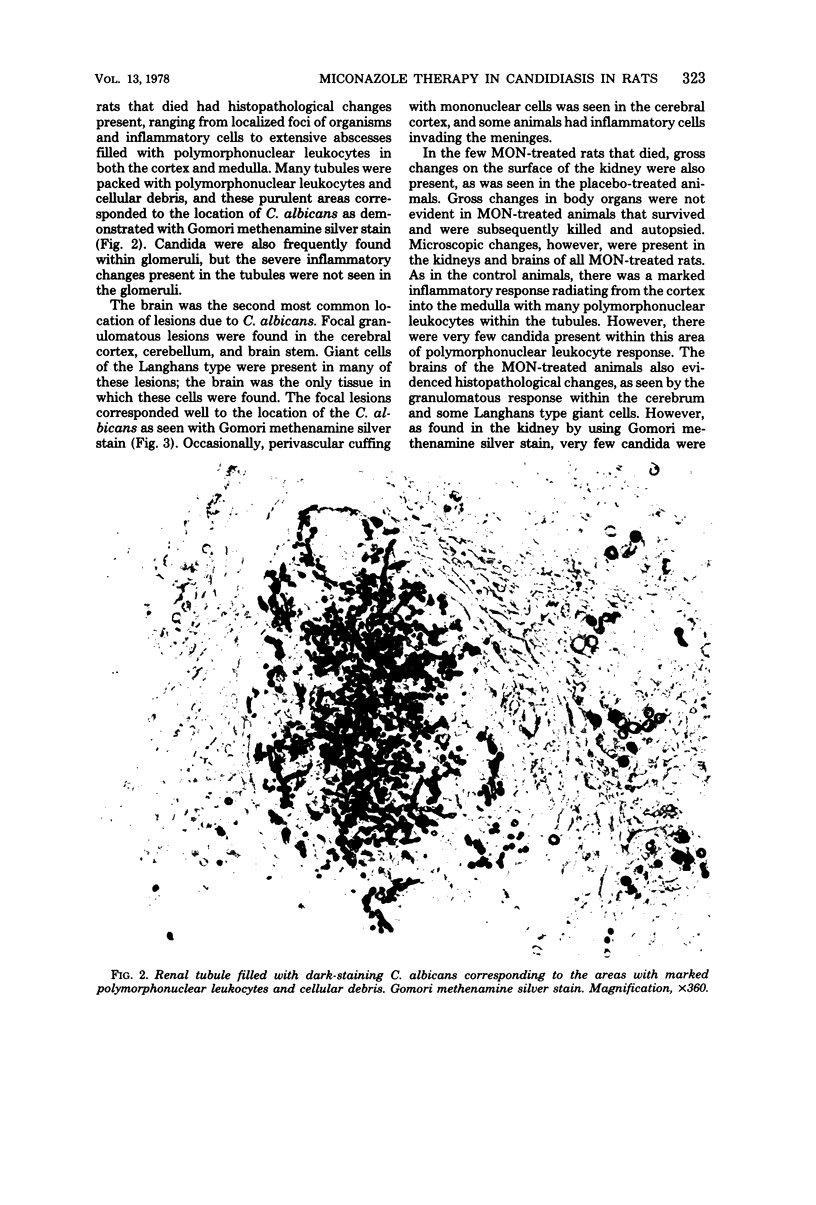
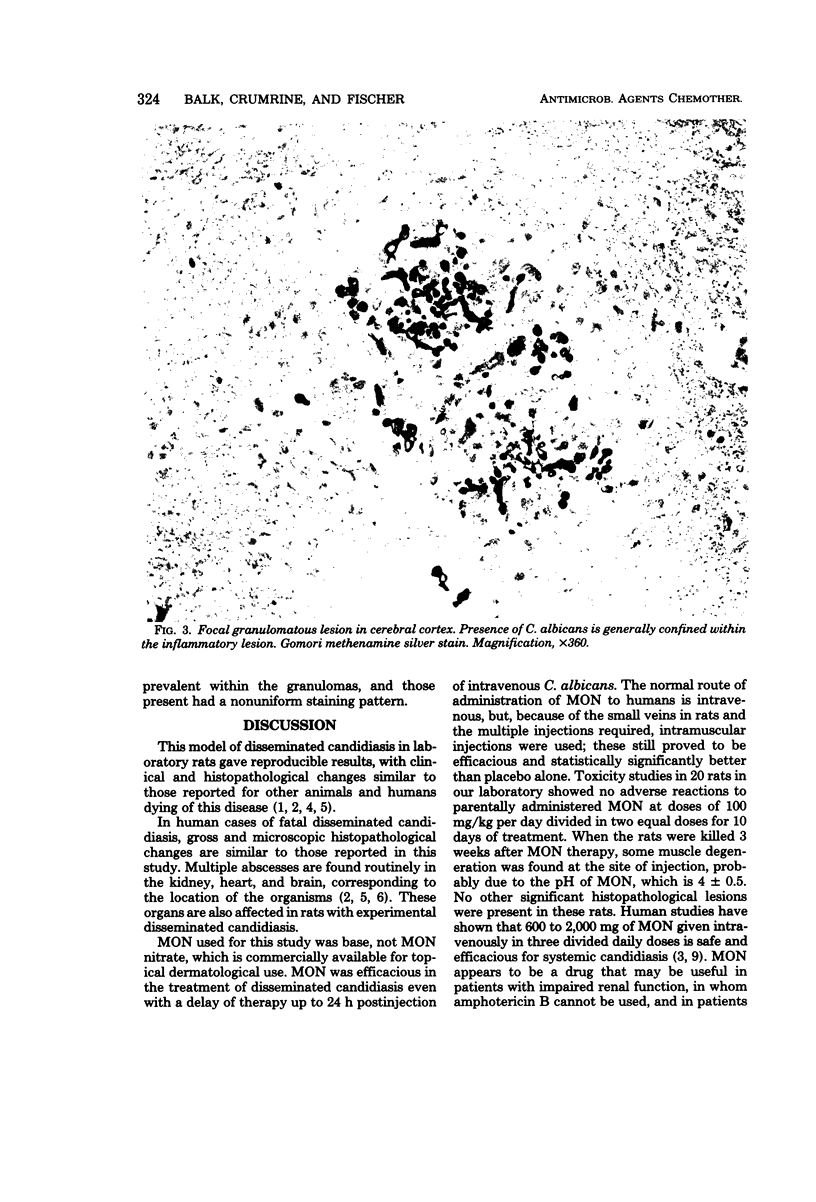
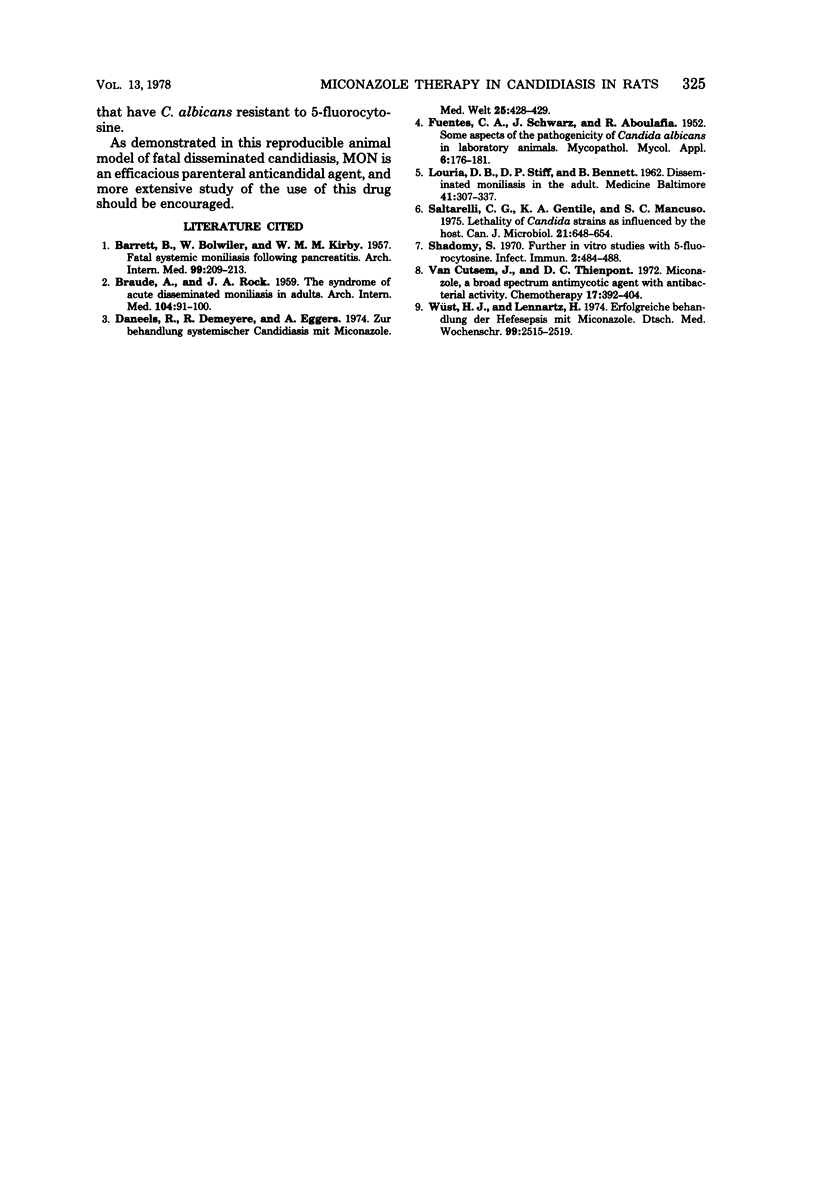
Images in this article
Selected References
These references are in PubMed. This may not be the complete list of references from this article.
- BARRETT B., JENSEN C. R., KIRBY W. M., VOLWILER W. Fatal systemic moniliasis following pancreatitis. AMA Arch Intern Med. 1957 Feb;99(2):209–213. doi: 10.1001/archinte.1957.00260020045007. [DOI] [PubMed] [Google Scholar]
- BRAUDE A. I., ROCK J. A. The syndrome of acute disseminated moniliasis in adults. AMA Arch Intern Med. 1959 Jul;104(1):91–100. doi: 10.1001/archinte.1959.00270070093012. [DOI] [PubMed] [Google Scholar]
- Daneels R., Demeyere R., Eggers L., Lust P., van Landuyt H., Symoens J. Zur Behandlung systemischer Candidiasis mit Miconazol. Med Welt. 1974 Mar 8;25(10):428–429. [PubMed] [Google Scholar]
- FUENTES C. A., SCHWARZ J., ABOULAFIA R. Some aspects of the pathogenicity of Candida albicans in laboratory animals. Mycopathol Mycol Appl. 1952 Jun 30;6(3):176–181. doi: 10.1007/BF02081434. [DOI] [PubMed] [Google Scholar]
- Saltarelli C. G., Gentile K. A., Mancuso S. C. Lethality of Candida strains as influenced by the host. Can J Microbiol. 1975 May;21(5):648–654. doi: 10.1139/m75-093. [DOI] [PubMed] [Google Scholar]
- Shadomy S. Further in vitro studies with 5-fluorocytosine. Infect Immun. 1970 Oct;2(4):484–488. doi: 10.1128/iai.2.4.484-488.1970. [DOI] [PMC free article] [PubMed] [Google Scholar]
- Van Cutsem J. M., Thienpont D. Miconazole, a broad-spectrum antimycotic agent with antibacterial activity. Chemotherapy. 1972;17(6):392–404. doi: 10.1159/000220875. [DOI] [PubMed] [Google Scholar]
- Wüst H. J., Lennartz H. Erfolgreiche Behandlung der Hefesepsis mit Miconazol. Dtsch Med Wochenschr. 1974 Dec 6;99(49):2512, 2515-9. [PubMed] [Google Scholar]




